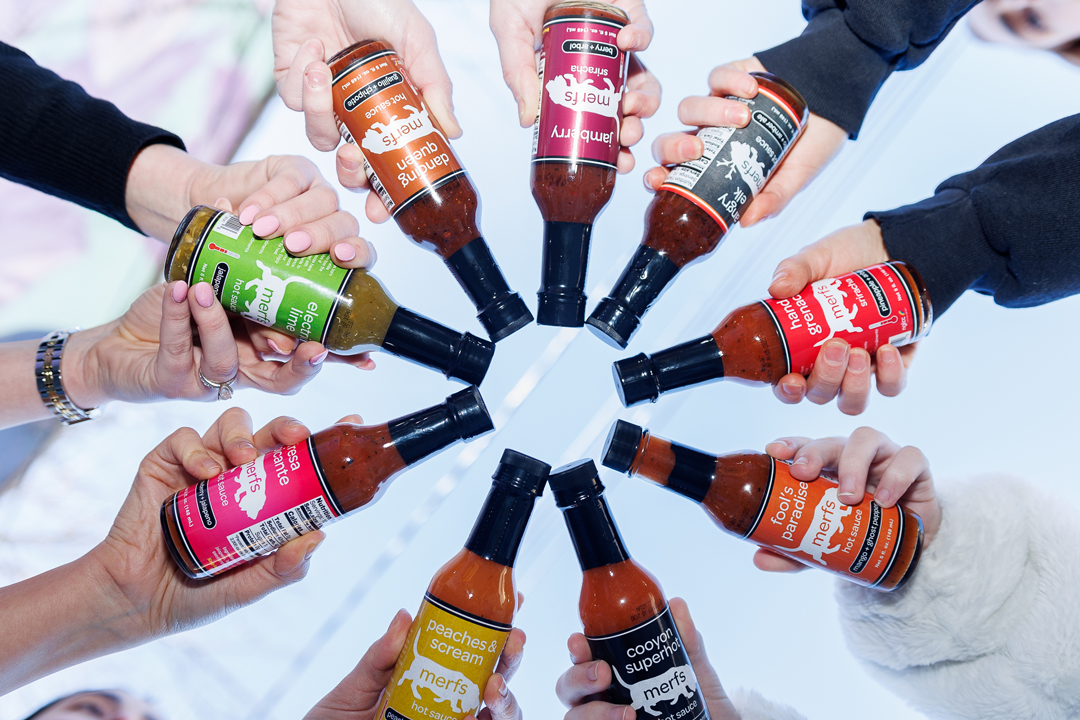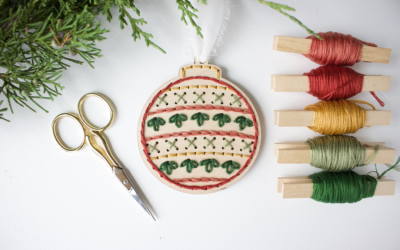Tabasco sauce emerged in 1868 so that people could drizzle a dram of liquid fire onto their morning eggs, and for nearly half a century, it was the only way. But then craft food innovators, armed with the knowledge that red tabasco peppers aren’t the only way to spice up a meal, dreamt up a world of hot sauces.
One of the best examples in Colorado is Kelly Schexnaildre (they/them). When they were 26, they spent the summer of 2012 tending to their garden in southeast Denver. They loved canning and experimental cooking ever since they were a kid, and with 15 years of experience in the restaurant industry, they tried their hand at making sauces at home.
Creating condiments with extra tomatoes, peppers, cucumbers and squash from their garden started a life-changing hobby. When a friend gave Schexnaildre a half-bushel of peaches, they made a peach habanero hot sauce. The combination of peaches, habaneros, lemon juice and white vinegar—known as Peaches & Scream Hot Sauce—was such a hit among friends and family that Schexnaildre wrote a business plan a year later for Merfs Condiments, naming the business after their parents’ basset hound, Murphy.
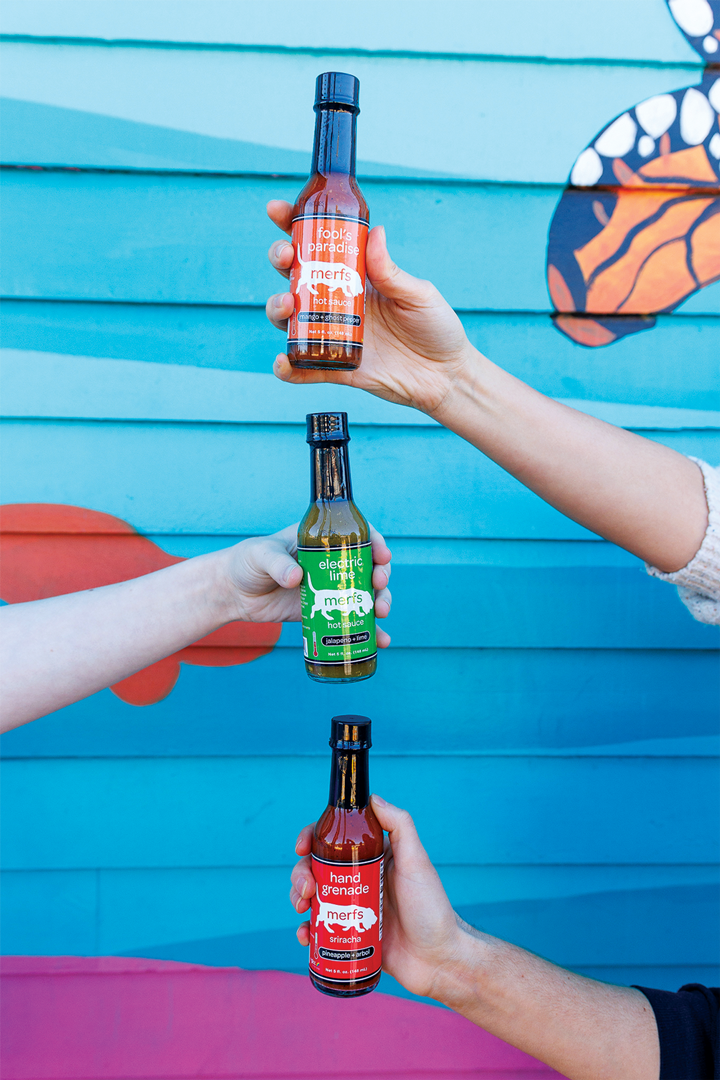
“I clearly had stumbled onto something,” Schexnaildre says. “Back then, we were still eating the national brands, but the industry was projected to grow from $1.2 billion to $1.7 billion by 2019 because we like spicy foods.”
Only 35 percent of the industry was taken up by name brands, Schexnaildre realized, with Tabasco dominating 20 percent of the world market share. That meant 65 percent of the market was up for grabs.
One of Schexnaildre’s goals was to find a healthier, fresher alternative to the well-known “Rooster Sauce,” a Sriracha sauce produced by Huy Fong Foods.
“It had a lot of sugar and preservatives and tasted chemically to me,” Schexnaildre says. “I sweetened my Hand Grenade Sriracha with pineapple instead and mixed in vinegar and salt and didn’t add preservatives.”
By the summer of 2014, Schexnaildre was selling three hot sauce styles at the South Pearl Street Farmers Market and cold-calling 20 restaurants a week in the metro-Denver area. Distribution contracts with Shamrock Foods and Sysco followed, and Merfs saw tremendous growth year over year for six years with placement in 700 restaurants, including many in Northern Colorado. COVID shut that down, and even after restaurants reopened, they put sauce packets on the tables instead of bottles. So, Schexnaildre pivoted their sales to e-commerce, large grocery stores and specialty shops.
By March 2023, Merfs bottles were back in more than 400 restaurants and stores across Colorado. The brand is known for being vegan and free of preservatives, sugar and gluten. Now Schexnaildre’s most popular sauce is their zingy, versatile Electric Lime salsa verde with roasted jalapeños and fresh lime juice.

A passion for peppers
When the world shut down in 2020, Landon Loewen started growing fiery peppers, like the Caribbean favorite, scotch bonnet (100,000-350,000 Scoville Heat Units), and scorpion (300,000-2,000,000 SHU or more, depending on the variety). In comparison, a tabasco pepper ranks a paltry 50,000 SHU, and jalapeños are a mere 2,500 SHU.
Friends kept buying Loewen’s spicy sauces, so he refined the recipes, developed seven more, earned an acidified food certificate through an online course from the University of North Carolina and started Loveland-based Sauce Daddy Hot Sauce in July 2021. At the time, he also worked for Burns & McCoy, a Fort Collins hot sauce company.
“The course teaches you how to make shelf-stable foods that don’t get people sick with E. coli contamination or botulism,” Loewen says. “Adding an acidic ingredient, like lime juice or vinegar, helps to prevent bacteria, and you don’t need refrigeration. The sauce is good for a year after opening.”
Loewen adds smoked garlic to his scorpion pepper sauces for extra depth. Favorites are Kingston Fire, a Jamaican-style hot sauce with mango and habanero, and Pineapple Fulmination, a pineapple and smoked garlic combo. In contrast, he says the Garlic Sriracha (red jalapeño) and Dirty Verde (southwest green jalapeño) are mild enough for your grandma.
He makes three different flavors every week in five-gallon batches to sell online, at Doug’s Diner in Loveland and at The Hot Sauce Realm in Fort Collins, a small shop next to the Aggie Theatre that stocks more than 150 small-batch hot sauces.
To outsource or not
John Comeau, owner of Horsetooth Hot Sauce in Fort Collins, began creating Louisiana-style, vinegary hot sauces in 2008. He says they’re unique and traditional at the same time; the traditional part is fermenting the peppers to enhance their tanginess and eliminate the strong vegetal flavor.
“Fermenting for one-to-two weeks in a jar with salt mellows the chlorophyll, so it doesn’t taste like a ground up green pepper,” he says.
Horsetooth’s uniqueness comes from their unconventional recipes, like The “O” Face, which combines orange habanero, cantaloupe and sweet carrots. It’s also Horsetooth’s spiciest sauce.
“We didn’t want to make anything super hot that people couldn’t enjoy and eat a lot of, although we do make small batches, like Linger, with scorpion chile, cranberries, agave nectar and mandarin oranges,” Comeau says.
For years, he shared a commercial kitchen with the original makers of Gilberto’s Gourmet Goodness and Jay Turner of Burns & McCoy, who started their hot sauce brands in 2006 and 2015, respectively. Even with Horsetooth’s huge following and national distribution in restaurants and grocery stores, Comeau still oversees the production to keep tabs on quality control.
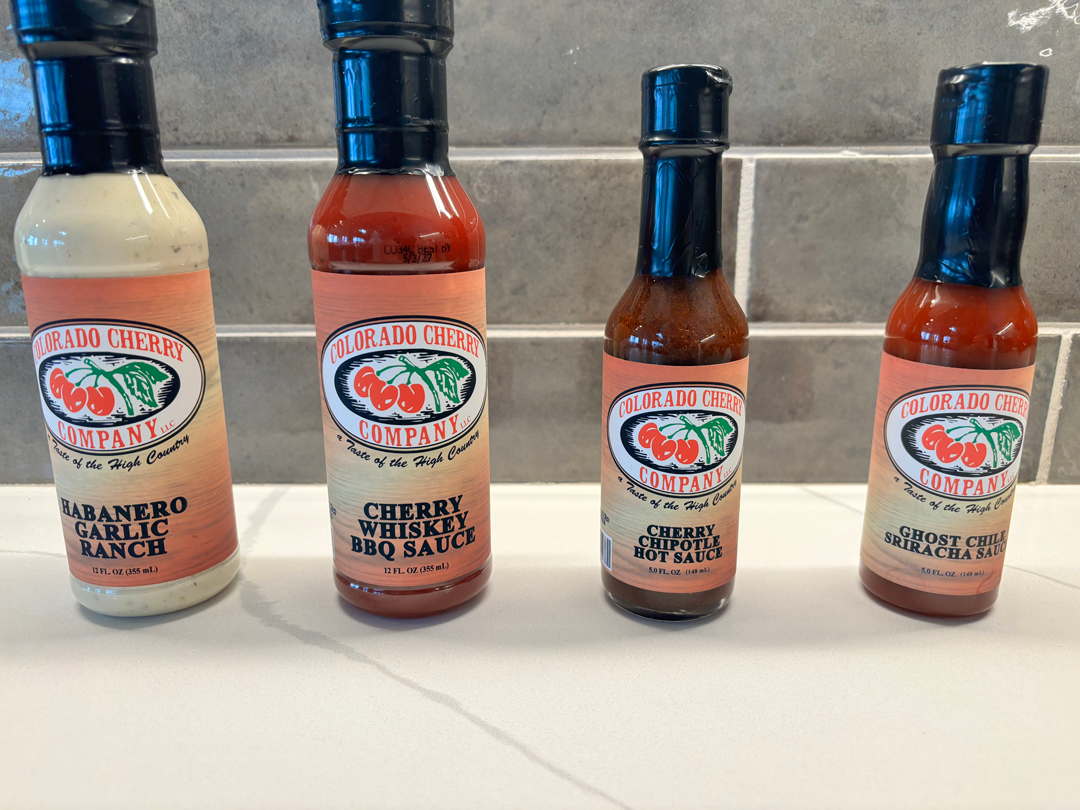
Gilberto’s was picked up in 2018 by Denver’s Silver State Foods, known since 1947 for producing Aiello pasta sauce. Silver State sauce maker Andrew Ernst says the company takes over production of the sauce but maintains each brand’s eclectic elements. They recently acquired Burns & McCoy.
“Burns & McCoy is based on super hot peppers, and Turner built up a national following when he got on the YouTube show, ‘The Hot Ones,’ with Mezcaline Hot Sauce and a couple other sauces,” he says.
Mezcaline has a blend of red jalapeños, orange habanero, cacao powder and mezcal, all rich and subtly sweet Oaxacan elements that Ernst and his family’s business maintain through production of the sauce.
Gilberto’s, formerly owned by Jay Iglehart and Danielle Gilbert, has three sauces produced by Silver State, including Dirty South (made with fresh peaches and habaneros) and Zesty Cayenne. Ernst says the brand’s bright flavors come from using fresh vegetables and fruit: “It’s an awesome product. It smells up the whole [Silver State] shop on days we cook it.”
Like many other innovators, Kristi Lehnert, co-owner of Colorado Cherry Company, uses co-packers to produce the
fourth-generation company’s ciders and other products. She didn’t hesitate to outsource production when she jumped into the hot sauce market using cherries. The company, which rebranded in 2020 to
Legacy Pie Co., sells hot sauces at their stores in Loveland, Lyons, Estes Park and Denver.
“Any time I can spin something and give it a cherry flavor, I will,” Lehnert says. “You can’t go to the supermarket and get a cherry habanero sauce.”
The hottest of her sauces is the Colorado Cherry Company Carolina Reaper, which her producer ranks a 27 out of 10 heat levels. At over two million SHUs, the Carolina Reaper is one of the hottest peppers out there. She also sells a Ghost Fire Ranch dressing (which she likes dipping pizza crust into or drizzling onto street corn) and an extremely hot Ghost Fire Hot Sauce.
_________________________________________________________________________________________________________________________
Homemade Hot Sauce
Making hot sauce at home is all about unleashing your creativity. Most hot sauce entrepreneurs started by experimenting with flavors and pairings. Landon Loewen, owner of Sauce Daddy Hot Sauce, recommends copying a favorite sauce’s ingredients and making your own version.
You can use peppers and tomatoes from your garden, but it’s also fun to go to the grocery store or a farmers market to discover new chiles to work with, says Kelly Schexnaildre (they/them), owner of Merfs Condiments. You can put just about anything in hot sauce, but they recommend experimenting with garlic and ginger.
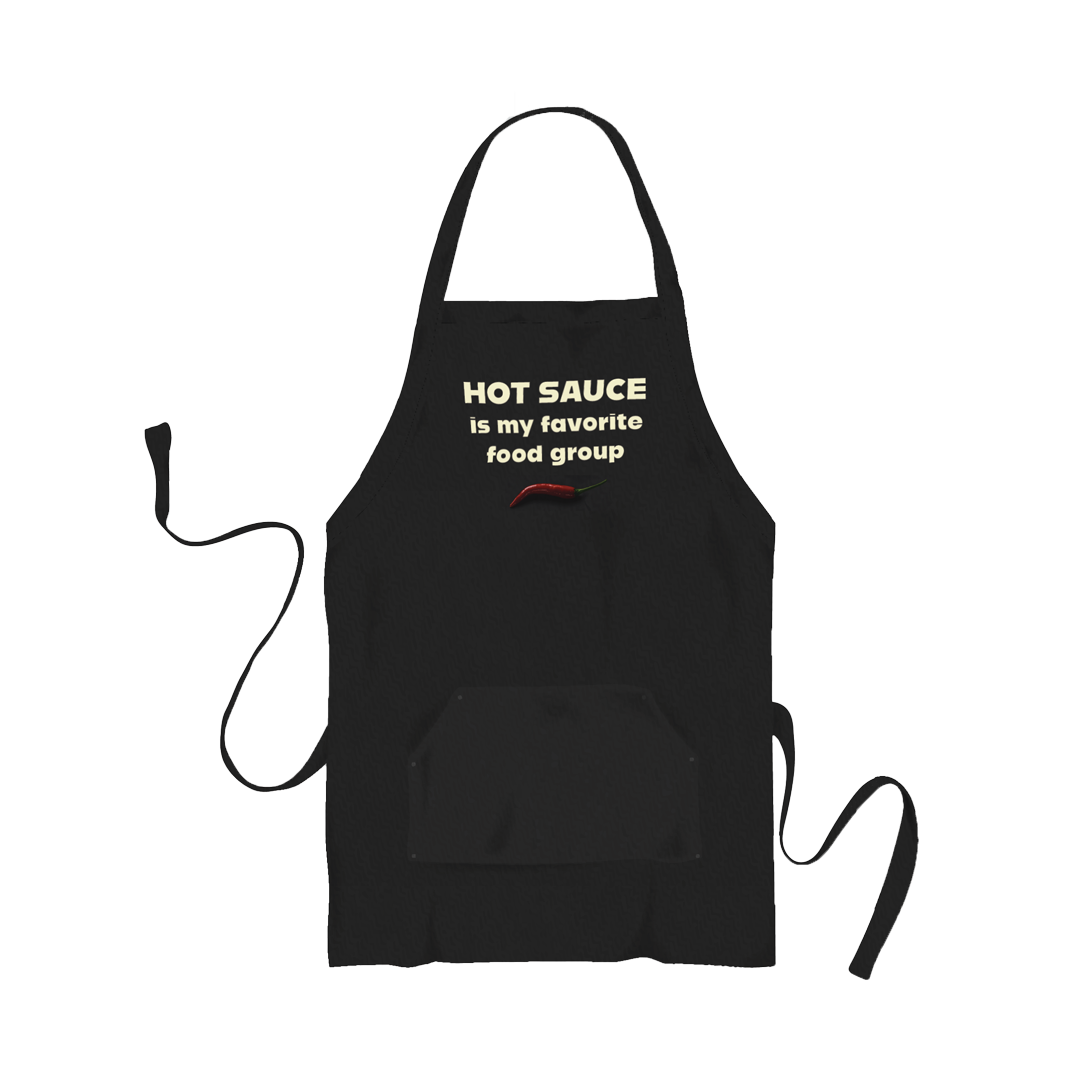
One of the more unique hot sauces they have made included coffee beans, cherries, chipotle peppers, ancho chiles and a touch of ghost pepper. White vinegar adds a zip, while apple cider vinegar works better in chipotle-style sauces.
“Add sweetness with cranberry and bourbon, or make it savory like a mole sauce that’s rich, smoky and has an umami flavor,” Schexnaildre says.
While creating your sauces, wear gloves to prevent oil from ghost peppers or other Scoville Heat Unit (SHU) chart toppers from burning your skin and eyes.
“It’s no joke working with them,” cautions Kristi Lehnert, co-owner of Colorado Cherry Company.
After combining, cooking and cooling your ingredients, the final step is blending them to make a sauce. Funnel the mixture into woozy bottles, those five-ounce cuties with the funny name made for shaking liquids onto food.


